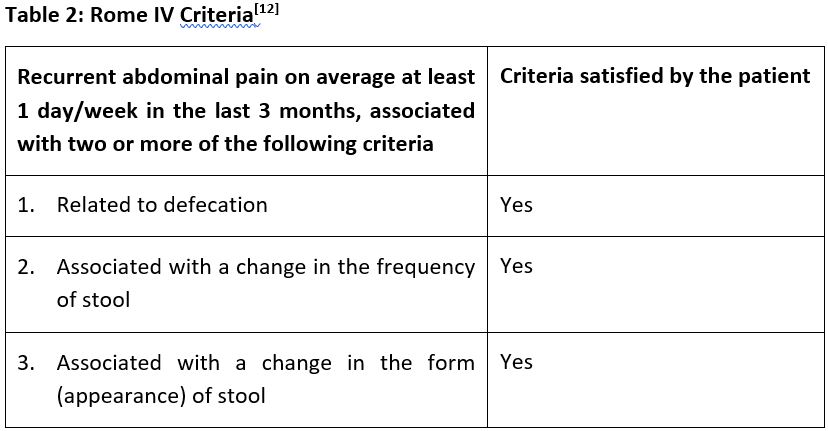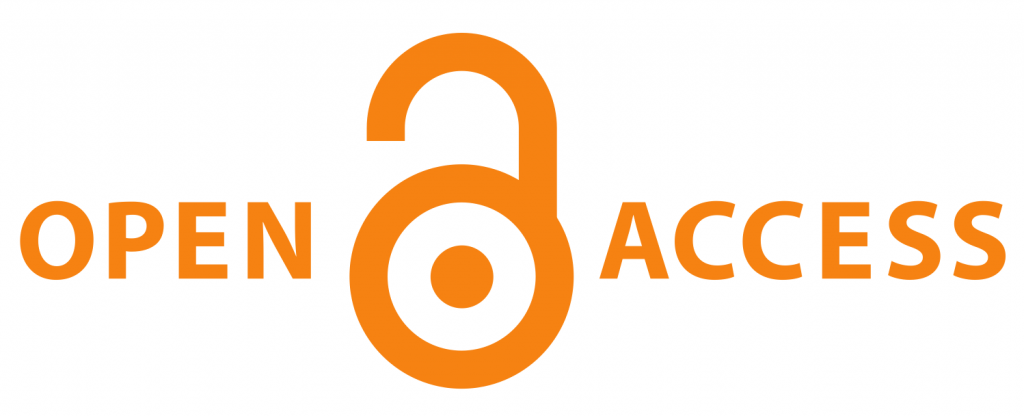An Ayurvedic approach of Vataja Grahani vis-à-vis Irritable Bowel Syndrome - A Case Study
DOI:
https://doi.org/10.21760/jaims.10.1.39Keywords:
Grahani, Irritable bowel syndrome (IBS), Sarvanga Abhyanga, Takra Basti, ShamanaushadhisAbstract
Grahani is considered as Agni Adhishtana, which help in the process of metabolism and digestion of food. The ancient text of Ayurveda described that ingestion, digestion, absorption and assimilation of Aahara is regulated by Grahani. Any disturbances in the status of Agni leads to Mandagni which further leads to improper digestion of ingested food leading to Grahani Roga which nowadays affects large population globally, especially in developing countries due to improper food habits along with stressful lifestyle. In Modern parlance, it can be correlated to IBS. Irritable bowel syndrome (IBS) is characterized by recurrent abdominal discomfort in association with alternate episodes of diarrhoea and constipation. Physiological, luminal, behavioural and psychosocial factors are responsible for IBS. They are caused by two entirely different mechanisms such as Bowels habits disturbed by diarrhoea or constipation occurring alone or alternating. A case of 57 years old female diagnosed with Vataja Grahani Roga after detailed history taking, thorough clinical examinations and was diagnosed with IBS using Rome IV criteria and Mannings Criteria to assess the severity of the disease. Patient was then treated with Ayurveda Panchakarma therapies such as Kashayaseka, Sarvanga Abhyanga, Takra Basti and Shamanaushadhis. Assessment was done using IBS Symptoms Severity Scoring Scale. After completion of Ayurveda treatments, there was a marked improvement in the condition of the patient in terms of symptoms and IBS Severity scoring scale was reduced to score 9 from 34 within a span of 11days. Hence this case is an evidence to demonstrate the effectiveness of Ayurveda treatment in case of Grahani Roga.
Downloads
References
Agnivesha, Charaka Samhita, Ayurveda Deepikatika of Chakrapani. Varanasi: Chaukhamba Surbharati Prakashan; 2011. Sutra Sthana, 11th chapter; 35(738): 74.
Murthy Srikanta KR. Susrutha Samhita. Varanasi: Chaukhambha Orientalia; 2012. Sutra Sthana, 46/3; p. 370.
Trikamji Y. Charaka Samhita. Varanasi: Chaukambha Sanskrit Sansthan; 2011. Sutra Sthana, 27/349–350; p. 174.
Tewari PV. Kashyapa Samhita. Varanasi: Chaukhambha Visvabharati; 2016. Khila Sthana, 4/3–6; p. 468.
Kashinath Shastri. Charak Samhita. Vol-1. Varanasi: Chaukhambha Bharti Academy; 2011. Chikitsa Sthana, 15/51-52; p. 461.
Vidyotini Hindi Commentary by Kaviraj Atridev Gupta edited by Vaidya Yadunandana Upadhyaya. Astang Hrdyam of Vagbhata. Varansi: Chaukhambha Prakashan; 2012. Sutra Sthana, 12/8; p. 121.
Agnivesha, Charaka Samhita, Ayurveda Deepikatika of Chakrapani. Varanasi: Chaukhamba Surbharati Prakashan; 2011. Chikitsa Sthana, 15th chapter, Sloka No. 56-57; p. 462.
Vagbhatta. Astanga Hridaya, Chikitsa Sthana, Grahani Dosha Chikitsa Adhyaya edited by Y. Upadhyaya. Varanasi: Chaukhambha Prakashan; 2012. 10/1.
Shrivastava Y, Kumar A, Singh SK. Ayurvedic Review of Grahani w.s.r to IBS. World J Pharm Med Res. 2021;7(4):138-143.
Patel N, Shackelford KB. Irritable Bowel Syndrome. In: StatPearls [Internet]. Treasure Island (FL): StatPearls Publishing; 2024 Jan-. Available from: https://www.ncbi.nlm.nih.gov/books/NBK534810/
Kashinath Shastri. Charak Samhita. Vol-1. Varanasi: Chaukhambha Bharti Academy; 2011. Chikitsa Sthana, 15/59-64; p. 472.
The Rome Foundation. Rome IV Criteria. Available from: https://theromefoundation.org/rome-iv/rome-iv-criteria/
National Center for Biotechnology Information. PMC. Available from: https://www.ncbi.nlm.nih.gov/pmc/articles/PMC4532078/
National Institute of Diabetes and Digestive and Kidney Diseases. Available from: https://repository.niddk.nih.gov/media/studies/ibsos/Forms/IBSOS_IBS.Symptom.Severity.Scale_IBSSSS_Form.pdf
Kashinath Shastri. Charak Samhita. Vol-1. Varanasi: Chaukhambha Bharti Academy; 2011. Chikitsa Sthana, 15/117-120.
National Center for Biotechnology Information. PubMed. Available from: https://pubmed.ncbi.nlm.nih.gov/29262062/
Kashinath Shastri. Charak Samhita. Vol-2. Varanasi: Chaukhambha Bharti Academy; 2011. Sidhi Sthana, 10/44-45.
Kashinath Shastri. Charak Samhita. Vol-2. Varanasi: Chaukhambha Bharti Academy; 2011. Vimana Sthana, 8/140.
Murthy Srikanta KR. Susrutha Samhita. Varanasi: Chaukhambha Orientalia; 2012. Chikitsa Sthana, 38/87.
Kashinath Shastri. Charak Samhita. Vol-1. Varanasi: Chaukhambha Bharti Academy; 2011. Sidhi Sthana, 1/27.
Murthy Srikanta KR. Susrutha Samhita. Varanasi: Chaukhambha Orientalia; 2012. Uttara Tantra, 40/178.
Das A, Saritha S. From the Proceedings of Insight Ayurveda 2013, Coimbatore, 24th and 25th May 2013. PA03.17. A clinical evaluation of Punarnavadi Mandura and Dadimadi Ghritha in management of pandu (Iron deficiency anemia). Anc Sci Life. 2013 Jan;32(Suppl 2):S86. doi: 10.4103/0257-7941.123914. PMCID: PMC4147561.
Chunekar KC. Bhavaprakash Nighantu: Haritakyadi Varga. Varanasi: Chaukhambha Bharti Academy; 2015. p. 62.
Acharya Sushruta. Sushruta Samhita, Sri Dalhanaacharya Virachita Nibandasangraha and Nyayachandrika Panjika of Sri Gayadaasacharya on Nidanasthana, Chikitsa Sthana 24th chapter, edited by Vaidya Yadavji Trikamji Acharya and Narayan Ram Acharya. Varanasi: Chaukhamba Sanskrit Sansthan; 2013. p. 488.
Kulkarni S, Fathima SA, Naveen BS. To evaluate the efficacy of Jalaukavacharana followed by Khadira Prayoga in Vicharchika w.s.r to Eczema. J Ayurveda Integr Med Sci. 2017;2(4):19-25.
Charak Pharmaceuticals. Mannol Syrup. Available from: https://www.charak.com/
Sharma PV. Dravya Guna-vijnana. Vol-2. Varanasi: Chaukhambha Bharti Academy; 2012. Chapter no-5; p. 465.
Sharma P. Charak Samhita. Vol-1. Varanasi: Chaukhambha Orientalia; 2011. 25/40; p. 168.
Samal J, Dehury RK. A Review of Literature on Punarnavadi Mandura: An Ayurvedic Herbo-Mineral Preparation. Pharmacognosy Journal. 2016;8(3):180-184.
Raskar, Swapnil & Toshikhane, Hemant & Taklikar, Shreehari. (2021). Limiron Granules for Iron Deficiency Anemia in School going Children. Journal of Pharmaceutical Research International. 33(46B). 80-89. 10.9734/JPRI/2021/v33i46B32918.















